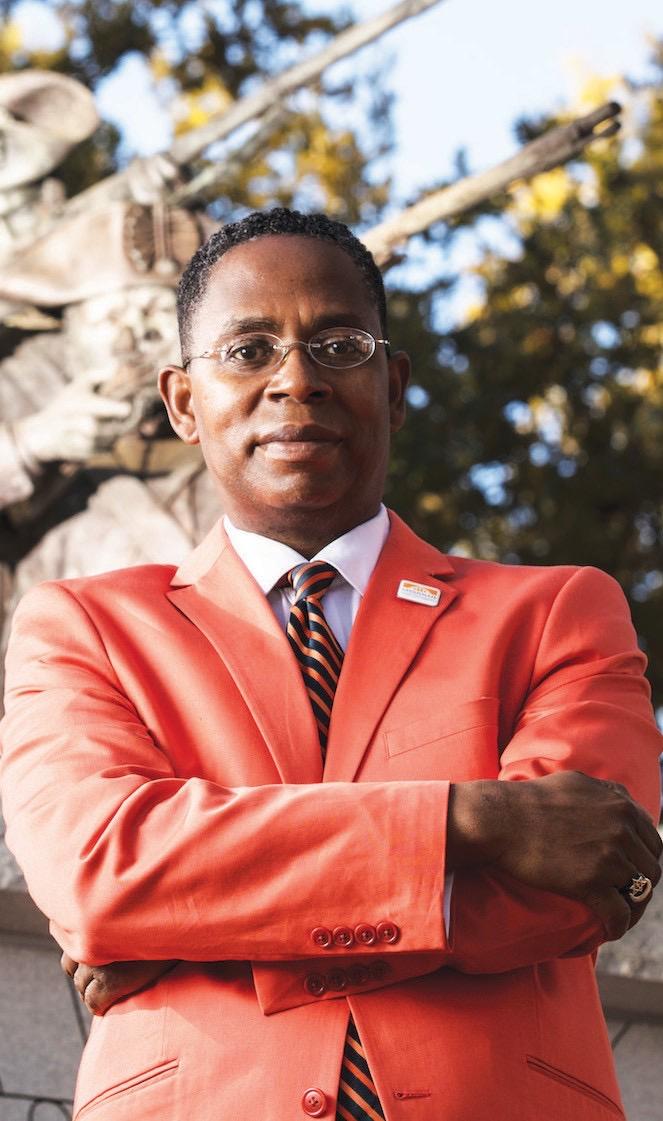get these nets
Veteran

A new installment in the Georgia Historical Marker Program commemorates the Igbo Landing uprising on St. Simons Island
May 24, 2022
Remembering Igbo Landing: The story of rebellion on Georgia's shores

Today, Dunbar Creek looks like any other tidal creek a vacationer might drive across on the way to the beach at St. Simons Island.
Amy Mitchell Roberts grew up on St. Simons and sees something else. She remembers the warning a neighbor got from his mother about going down to Dunbar Creek.
“You know, she wouldn't let her son go fishing down there because it was the end of the world,” she said.
Mitchell Roberts is descended from enslaved people who worked this island, which means she is Gullah Geechee.
Her neighbor’s “end of the world” was when about 75 Igbo people decided to rebel against the slavers who had taken them on the three-month voyage from West Africa to St. Simons Island. The place where that happened is called “Igbo Landing” by many.

Gino's landing painting by Diana "Dee" Larue Williams
It’s a story retold by artists ranging from Toni Morrison to Beyonce. Now the Georgia Historical Society is acknowledging the space on St. Simons Island with a new roadside historic marker.
Amy Mitchell Roberts first learned the story of Dunbar Creek, Igbo Landing and the rebel Africans in the one-room schoolhouse on the island where, today, she directs the African American Heritage Coalition.
“They were on the ship," Mitchell Roberts said. "They decided that this was not the life that they wanted, this was not what they bargained for.”

Caption
A mural in Brunswick commemorates the 1803 rebellion of enslaved Africans at Dunbar Creek on St. Simons Island.
Credit: GPB
Records describe how the Igbo took control of the ship and drove their captors into the water. But there were still men on the shore, waiting to force the Igbo onto plantations. And so the people, most still wearing their iron shackles, decided to take one more step.
“When the boats docked, they just walked over into water,” Mitchell Roberts said. “They decided that's what they would do. 'The water brought us in. The water will take us away.'”
Their bodies did not emerge from the water. But what you believe happened next depends on what you, or your ancestors, needed from the story.

Caption
Amy Mitchell Roberts, left, and Griffin Lotson.
Credit: GPB
“Even this story now has grown into something larger than what happened on that day,” said Griffin Lotson, vice-chairman of the Gullah Geechee Cultural Heritage Commission.
Lotson is Amy Mitchell Roberts’ cousin. He remembers being told by his father that when the Igbo went into the water, they didn’t drown. They flew home.
“And the flying African stories come about because the only thing you had in your mind, like the Igbos, was being free,” Lotson said.

Caption
Amir Jamal Touré is the Resident Scholar at Geechee Kunda and Gullah Geechee Fellow at Georgia Southern University.
Credit: GPB
Freedom was not on the mind of Georgia planters after the incident. In a letter written not long after the rebellion, Savannah slave trader William Mein saved his sympathy for a white overseer. “Poor fellow lost his life,” Mein wrote.
Amir Jamal Touré, Gullah Geechee Fellow at Georgia Southern University and Resident Scholar at Geechee Kunda, said such sympathy did not extend to the drowned Igbo from Mein or the people like him.
“These Africans are money to them," Touré said. "They are wealth to them.”
Touré said it’s wrong to interpret what happened at the Igbo landing site as a mass suicide.
“That's somebody else shaping the narrative,” he said.
Instead, he said, look at the choice the Igbo made for themselves as an act of resistance.
“They’re saying that basically, ‘No man owns my soul,’” Touré said. “Only God owns my soul.”
Bobby Aniewku is an Atlanta attorney who was born in Nigeria and is an Ozo, or spiritual advisor in the Igbo tradition. He said the story of resistance and self-determination at Dunbar Creek is a story that has traveled the world.
“It's called the first freedom march in the United States,” Aniewku said.
Aniewku first came across the story on a St. Simons vacation. In 2016, Aniewku was inspired to perform spiritual work at Igbo Landing, building on a visit by Igbo descendants from Haiti, Brazil, The Bahamas, and Barbados years earlier. He and others believed the souls of the rebel Igbo were trapped in the water.

Caption
Bobby Aniewku is an Ozo, in the Igbo tradition.
Credit: GPB
“They are still there after all these years, but never left because of the violent death,’ Aniewku said.
So Aniewku and other Igbo leaders performed a rite of passage called "ikwa ozu” at the site. Ikwa ozu means something like "celebrating the dead.”
“And so that was our equivalent of telling their soul ‘Now their souls are at peace,’” Aniewku said.
Bobby Anwiewku said he believes that finally set the souls of Igbo Landing free.